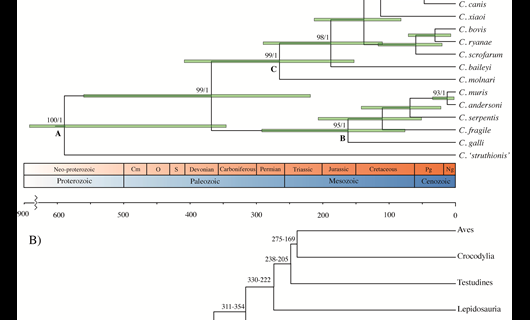The origin of Cryptosporidium - a major infectious disease in vertebrates.
by By Juan-Carlos Garcia-Ramirez

Cryptosporidium species are parasites that have been found in all vertebrate groups although most of their diversity is associated with mammal and bird species. They are increasingly known as major contributors to diarrhoea morbidity and mortality in humans, mainly in children and AIDS patients, and economic losses in agriculture and medical care. There is a lack of information about the time of origin for this group of parasites and the reciprocally effect with their hosts. Current tools in biology for investigation of evolutionary history using molecular sequences can help to infer the similarity or not of the dates of divergences and interactions between Cryptosporidium and their hosts.
In a new paper published in Parasitology , (doi: 10.1017/S0031182016001323) we estimated that the origin of Cryptosporidium is concordant with the rise of vertebrates about 600 Mya. Furthermore, the formation of several species in Cryptosporidium occurred after the bolide impact of an asteroid resulted in the extinction of numerous animal groups (Dinosaurs among the most known), which left major ecological opportunities for terrestrial mammals and birds to flourish (the Cretaceous-Paleogene extinction event). Despite the evidence that some species are shifting to infect new hosts there is also evidence of coevolution with vertebrate species. All of this together will help in our understanding of the evolution of Cryptosporidium and open new avenues of research in the ecology, dynamics and epidemiology of cryptosporidiosis disease in humans and other animals.
Detail Picture ![]() Cryptosporidium.png (0.28MB)
Cryptosporidium.png (0.28MB)